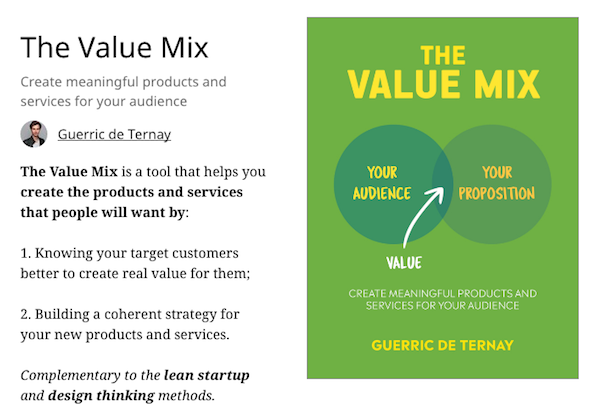 Here you’ll find a guide to best alternatives of the Value Proposition Canvas.
Here you’ll find a guide to best alternatives of the Value Proposition Canvas.
It’s a template that is supposed to help you create new product and service ideas.
But…
It’s actually not the best tool to achieve that.
There are better alternatives to the Value Proposition Canvas.
So in this article, you’ll find better exercises for your innovation workshops and landing your buyer personas and product ideas.
What is the Value Proposition Canvas by Strategyzer?
A “value proposition canvas” is a way to capture the main things that make up your proposition, who would buy it, and why.
There are many different value proposition canvases out there.
But today, I want to focus on one of the most popular ones: Strategyzer’s Value Proposition Canvas.
This canvas is supposed to zoom in on two elements of a business model, the value proposition itself (what you offer to your customers) and the customer segments (who your customers are).
(For more information about creating compelling value propositions, have a look at The Value Mix).
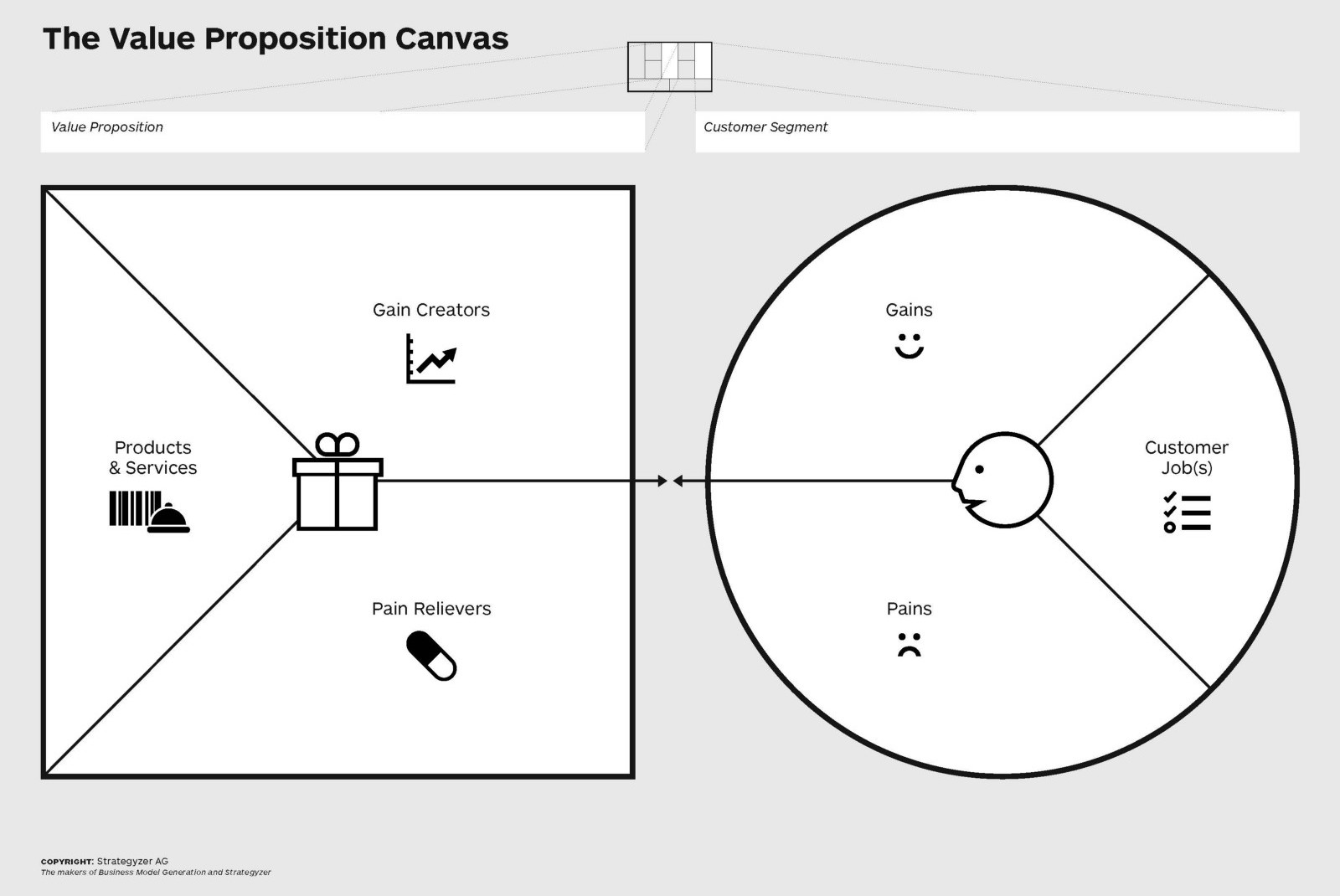
But it’s not really working.
While Strategyzer’s Business Model Canvas beautifully summarises the main elements of a business model, their version of the value proposition canvas has some major limitations.
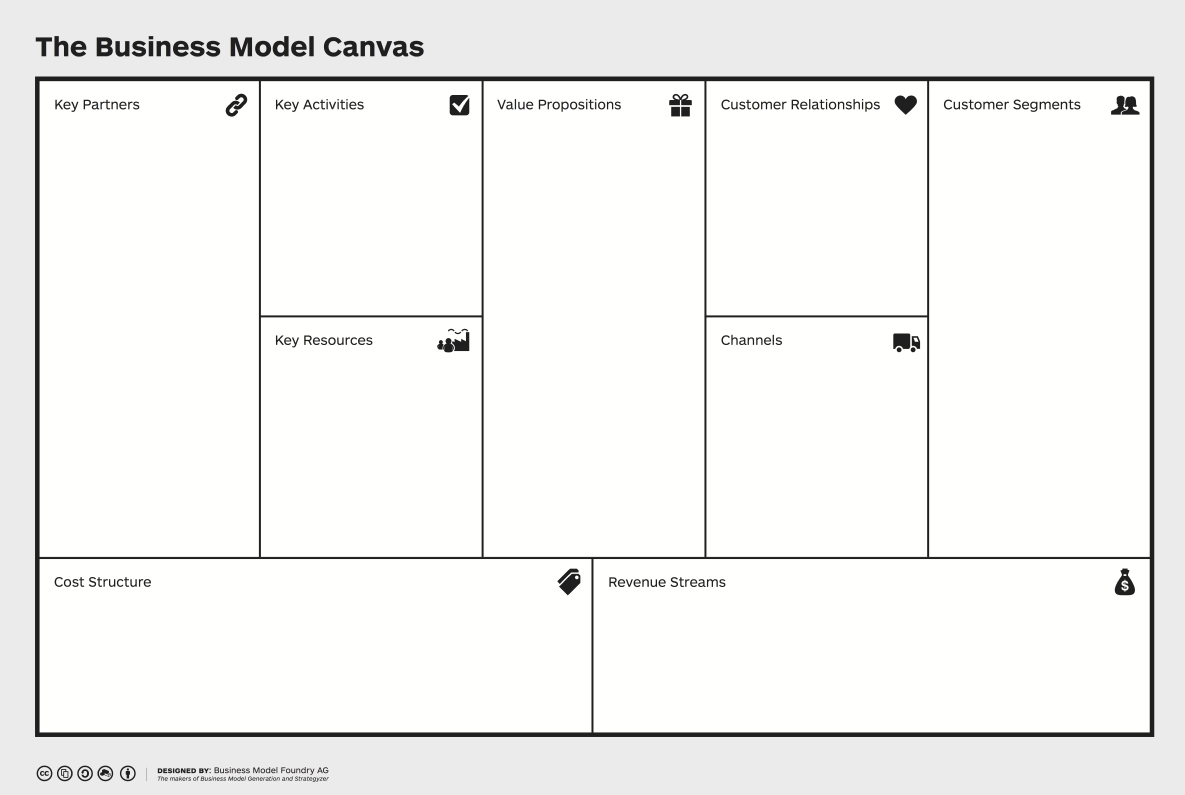
Let me tell share my review of the Value Proposition Canvas:
I’ll tell you what’s good about it and what’s missing.
And then, you’ll learn about some better alternatives to the Value Proposition Canvas.
Pros of the Value Proposition Canvas
1. The use of pain, gain, and job to be done
The concepts of pains, gains, and jobs to be done are a good starter to understand your customers.
(If you haven’t heard of jobs to be done before, read these reflections about jobs to be done.)
But these concepts are even more useful when you visualise them dynamically (more to come below about the customer journeys).
2. Trying to visualise everything on one page
The Business Model Canvas is a useful structure to adopt when you are developing a new venture or trying to map an existing business model to see how it can be changed or “disrupted”.
It’s helpful to have a one-pager on two occasions:
1. In an innovation workshop when you want the participants to focus on a specific area during a design exercise;
2. When you share the output with your team and your stakeholders (boss, investors, sponsors, etc…). It makes it visual!

The Value Proposition Canvas aims to do this.
And it does look visually satisfying. :)
But as we’ll see it’s not enough…
Cons of the Value Proposition Canvas
1. Too simplistic
It’s just good at highlighting potential benefits but without any context. It’s built on the idea that value is an equation where:
– “pains” match with pain relievers
– “gains” match with gain creators
But it’s too simplistic.
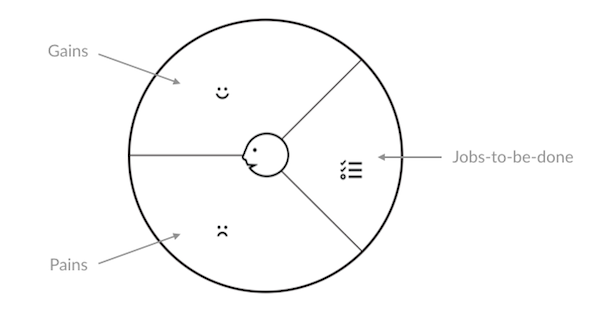
2. Not easy to use in a workshop
It makes it hard to get to a good outcome in a workshop when you use this template.
The Canvas isn’t a good template to come up with new ideas and capture the description of each of these ideas. And it isn’t a good tool to think about the benefits and user experience of a product or service.
There are better tools for that.
(More to come in this article.)
3. Missing the nuances of human emotions
The customer side of the Value Proposition Canvas is too mathematical. It misses many of the nuances of human behaviour and psychology.
It’s too utilitarian.
What’s missing is this “irrational” desires we experience.
What about impulse purchase? Or buying only organic or fair trade food?
The canvas doesn’t give a good explanation of these reasons to buy something.
4. “How to fill the canvas?”
There’s a problem with using such a canvas:
It makes you feel that you just need to fill the boxes. It turns the art of creating value propositions into a simplistic equation.
But innovation isn’t all black and white. Simplifying too much can limit your creativity.
While I recommend reading the book Value Proposition Design as a good summary of the Lean Startup process, I know there are better tools than the Value Proposition Canvas when you want to create new product or service ideas.
Better alternatives to the Value Proposition Canvas
Your objective is to create new product or service ideas.
In that context, there are two tools that can really help you.
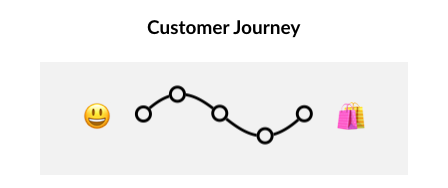
1. Map the customer journeys (Understand your market)
Objective:
Mapping customer journeys help you identify the circumstances in which your potential customers are struggling. It’s a great way to identify opportunities to create a new proposition.
What’s really helpful is to visualise dynamically all the steps your target audience goes through.
How to create a customer journey:
Creating a customer journey map is quite straightforward.
Here’s a simple explanation:
1. Decide on a journey you’d like to map (Which customer? In what circumstances?)
2. Write down all the steps your customer goes through. At this stage, include even steps that may seem trivial. This will help you consider the nuances of the journey that you may normally overlook.
3. Organise the steps into a map. A customer journey is often visually displayed sequentially in a timeline. In case of a complex journey, your map could include branches to show alternative paths in the customer journey.

3bis. Or.. write the story of your customers. Instead of visualising the journey, you can write about the customer story as if it was a novel.
Codecademy gives a good explanation of this process:
“Every good story has a main character and problems they encounter, so I began with our main character — our target persona. Then pulling from our research, I used quotes from users, the key problems that persona faced, and a ton of ideas from our team — everything I needed to start writing.”
4. Identify their struggles. What are the steps that feel frustrating to them? What are they trying to achieve?
If you’re interested, there’s a detailed explanation of how to build a customer journey in The Value Mix.
5. Look for the missing blocks. What you may realise is that you knew less than you thought about your customers. You may need to dive into more customers interviews to fill in the gaps. If possible, show the map to an expert who is familiar with your audience or test it directly with your target audience.
6. Ask yourself how you could create value at each step. Alternatively, you may see some patterns emerging. Maybe something surprising? Or an obvious opportunity to improve the overall customer experience?
Example of a customer journey: Airbnb
An Airbnb host may have a high mortgage to pay. She’s about to go on holiday and would like to rent her flat for the time of the holiday in order to pay for the flight tickets.
What the journey could look like:
Planning to travel > Looking for ways to pay for the trip > Chatting to a friend who recommends Airbnb > Looking for testimonials online > Registering to Airbnb > Getting a booking > Finding someone to manage the check-in while away > Finding a cleaner
By doing additional customer interviews, you may realise that finding someone to manage the check-in and clean the flat is a big frustration.
This piece of insight led to startups such as GuestReady.
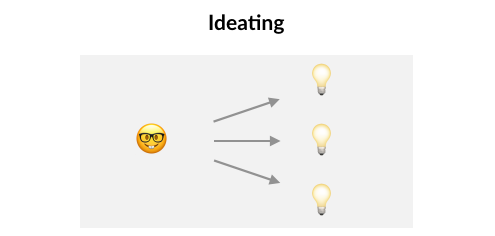
2. Value proposition statement (Create new product ideas)
Objective:
The value proposition statement helps you clarify your proposition. It’s a template used to frame your product or service in a way that is differentiated from the competition.
What’s the value proposition statement:
When landing your value proposition statement, remember these principles:
What makes a good value proposition:
– Clarity! It’s easy to understand.
– It communicates the concrete results a customer will get from purchasing and using your products and/or services.
– It says how it’s different or better than the competitor’s offer.
– It avoids hype (like ‘never seen before amazing miracle product’), superlatives (‘best’) and business jargon (‘value-added interactions’).
– It can be read and understood in about 5 seconds.
To help you, here’s an easy template to fill in:

The value proposition statement deserves some explanations.
How to use the proposition statement template:
While most elements of the template of are self-explanatory, I want to explain:
- The key attributes of your target audience: Try to capture some key characteristics of the segment you want to target as well as how they feel.
- What they want to get done: It’s about identifying the outcome they expect from using your proposition. For more info, have a look at these examples of the jobs-to-be-done theory.
- The reason to believe: It’s a “logical” explanation of why your proposition is better. In marketing, a reason to believe aim to reinforce the trust in the fact that your proposition will create value for your audience.
3. The Value Mix
For more tools about creating new products and services, have a look at The Value Mix.
The book presents gives you a useful framework to:
1. Know your target customers better in order to create real value for them;
2. Build a coherent strategy for your new products and services.
